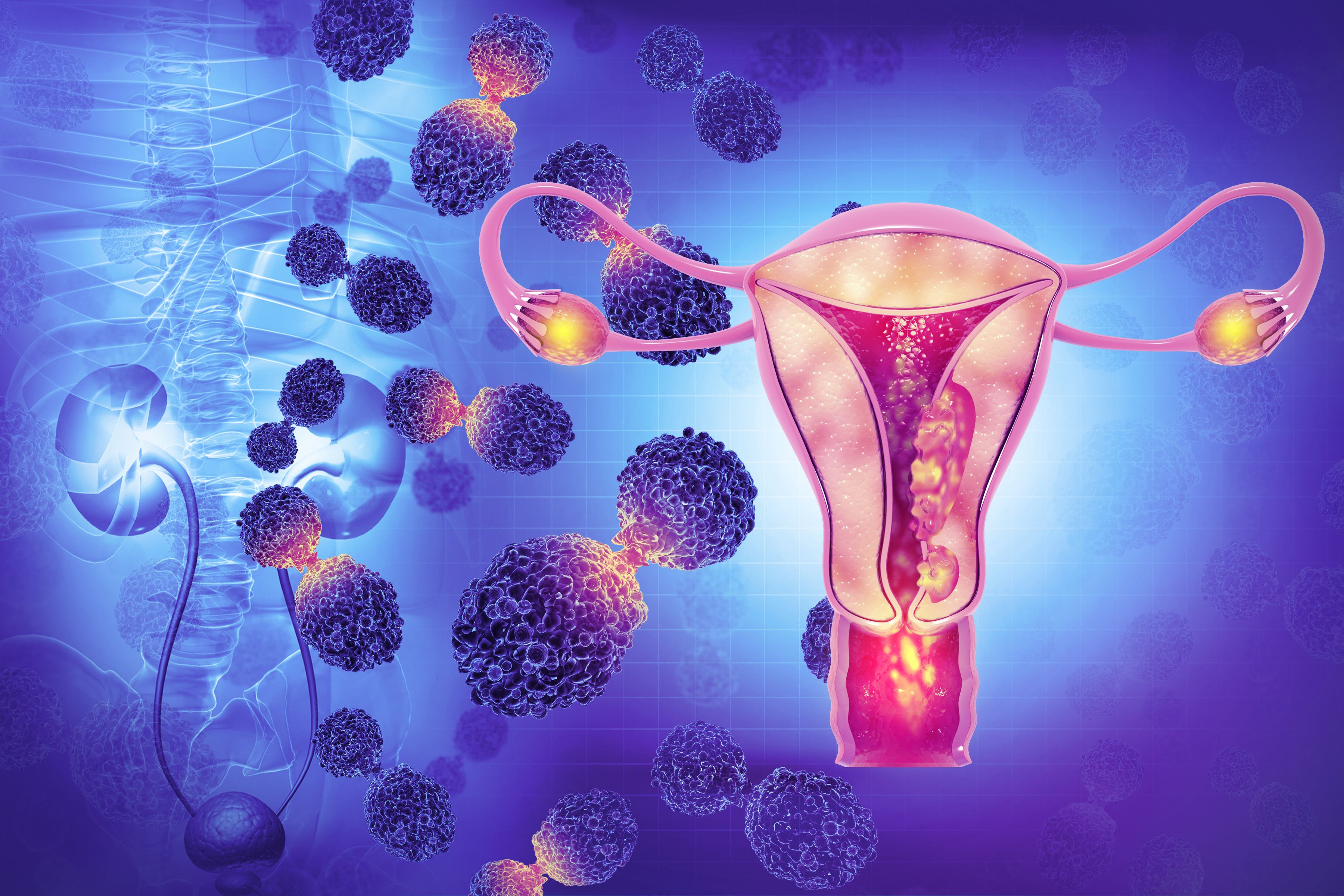- Center on Health Equity & Access
- Clinical
- Health Care Cost
- Health Care Delivery
- Insurance
- Policy
- Technology
- Value-Based Care
Tumor-Stroma Proportion Predicts Clinical Outcomes in Ovarian Cancer
A recent study found that tumor-stroma proportion was a reliable marker of chemoresistance, progression-free survival, and overall survival in high-grade serous ovarian cancer.
A study published in JAMA Network Open found tumor-stroma proportion (TSP) to be predictive of platinum chemoresistance, progression-free survival (PFS), and overall survival (OS) in patients with high-grade serous carcinoma (HGSC), the most common type of ovarian cancer. The findings make a case for standardizing and including TSP in prospective clinical trials as a predictive marker for drug resistance in HGSC, according to study authors Lou et al.1
TSP, which assesses the extent of tumor involvement with stromatous tumor microenvironment (TME) components, has been associated with poor prognosis across a range of cancer types. In a previous study by Lou et al published in JAMA Oncology, TSP at diagnosis of ovarian cancer demonstrated potential for predicting eventual platinum chemoresistance, which occurs in up to one-third of patients with ovarian cancer.1,2
The new study aimed to confirm the results in a larger cohort of patients using archival tissue samples from The Cancer Genome Atlas (TCGA) along with an independent cohort of samples from patients with HGSC from the University of Tübingen in Germany.1 The main outcomes were TSP’s ability to predict platinum chemoresistance, PFS, and OS, and the analysis was done from January 2021 to January 2024.
Samples from a total of 103 patients from the TCGA cohort and 192 from the Tübingen cohort were included in the study. Tumor samples were stratified into 2 categories based on previously evaluated cutoffs: high TSP (50% stroma or greater) and low TSP (less than 50% stroma). OS and PFS were estimated using Kaplan-Meier time-to-event functions.
In the TCGA cohort, 18 patients (17.5%) had tumors with high TSP, whereas the remaining 85 patients had low TSP. In the Tübingen cohort, 41 patients (21.4%) had high-TSP tumors, whereas 151 (78.6%) had low-TSP tumors.
Ovarian cancer illustration | Image credit: Crystal light - stock.adobe.com

Although TSP levels were not significantly associated with chemoresistance, PFS, or OS in the TCGA cohort, high TSP was significantly associated with shorter OS (HR, 1.867; 1.249-2.789; P = .002) and PFS (HR, 1.586; 95% CI, 1.093-2.302; P = .02) in the Tübingen cohort. Residual disease after surgery was also associated with shorter PFS (HR, 2.038; 95% CI, 1.436-2.892; P < .001), with the authors noting that residual disease is an established prognostic factor.
Additionally, patients whose disease was chemoresistant were twice as likely to have high TSP compared with patients whose tumors were chemosensitive (HR, 2.861; 95% CI, 1.256-6.515; P = .01). High TSP was also associated with significantly shorter PFS (HR, 1.675; 95% CI, 1.012-2.772 P = .04) and OS (HR, 2.491; 95% CI, 1.585-3.912; P < .001) in tissue microarrays from 185 patients from the Tübingen cohort.
“In the current study, high TSP was the only factor significantly predictive of emergence of platinum chemotherapy resistance (P = .01) following first-line treatment. The risk was even higher in patients with no metastases at diagnosis,” the authors wrote. “These results not only confirm that higher TSP is associated with development of chemoresistance to current standard-of-care treatments in a large cohort of patients with HGSC, but also potentially support the notion that high TSP might be the underlying mechanism of the poorer outcome also observed in these patients.”
More research is needed to determine the cellular- and molecular-level factors underlying the association between TSP and chemoresistance, the authors noted.
The study was limited by aspects inherently associated with using retrospective data, as well as the manual process of reviewing slides for TSP assessment. The authors also noted the relatively inexact nature of residual disease assessment after attempted maximal cytoreduction and debulking as a limitation. Still, the findings suggest TSP holds potential as a biomarker for chemoresistance in HGSC.
“This marker is particularly useful for evaluating prognosis as well as drug resistance in cases of HGSOC that undergo maximal debulking surgery, which is usually associated with the best possible prognosis,” the authors concluded. “Here, we demonstrate that TSP serves as an additional stratifying factor for determining cases at highest risk of recurrence and death that are likely due in part to lack of efficacy of standard platinum-based chemotherapies.” Therefore, they recommend be further standardization and incorporation of TSP into prospective clinical trials as a prognostic marker for chemoresistance.
Reference
1. Lou E, Clemente V, Grube M, et al. Tumor-stroma proportion to predict chemoresistance in patients with ovarian cancer. JAMA Netw Open. Published online February 27, 2024. doi:10.1001/jamanetworkopen.2024.0407
2. Lou E, Vogel RI, Hoostal S, et al. Tumor-stroma proportion as a predictive biomarker of resistance to platinum-based chemotherapy in patients with ovarian cancer. JAMA Oncol. 2019;5(8):1222-1224. doi:10.1001/jamaoncol.2019.1943
